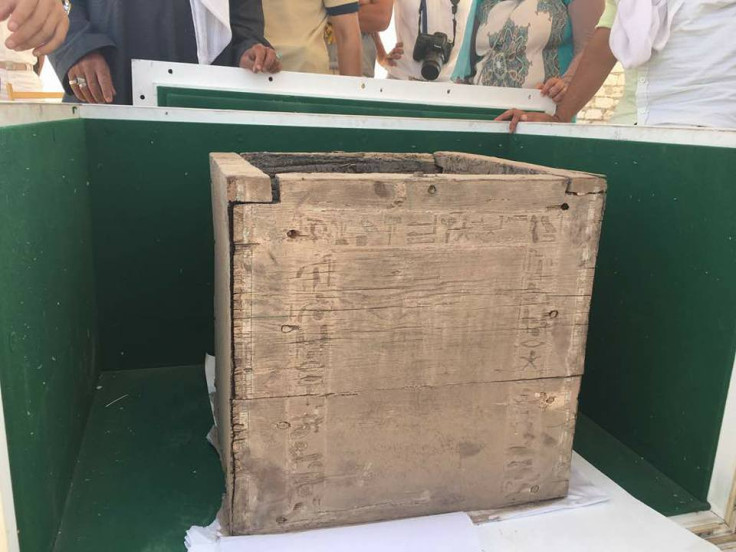Burial chamber of Ancient Egyptian pharaoh's daughter discovered in mystery 3,800-year-old pyramid
The pyramid has been associated with 13th dynasty pharaoh Ameny-Qemau.
At the heart of a 3,800-years-old pyramid located at the site of Dahshur in Egypt, archaeologists have discovered a previously unknown burial chamber. It might have belonged to Hatshepset, the daughter of a pharaoh.
The pyramid itself was only identified last month. Although many mysteries still surround this pyramid, it is thought to be associated with a king called Ameny-Qemau who ruled in the early thirteenth dynasty of Egypt.
The Ministry of Antiquities announced that the burial chamber, 30km south of Cairo, has been found within the pyramid after removing the many stones that covered it.
Inside the chamber, the archaeological mission led by Adel Okasha, the general director of the Dahshur site, unearthed a wooden box engraved with three lines of hieroglyphics.
The box would have contained canopic jars to store the organs of the mummy – the liver, intestine, stomach and lungs. These jars are now gone, and only a few mummy wrappings remain inside.

The hieroglyphic lines however provide useful clues about the identity of the deceased – a person called Hatshepset. Because of the pyramid's link to Ameny-Qemau, it is thought that Hatshepset was his daughter or a member of his close family.

Another pyramid located 600 metres away is associated with Ameny-Qemau. Archaeologists have been puzzled by this, wondering why the king would have built two of these massive structures for himself. The fact that one of the pyramids appears to have been dedicated to his daughter sheds a little more light on this mystery.
Experts believe it is possible that the pyramid containing the newly discovered burial chamber was built for a predecessor of Ameny-Qemau and he usurped it for the burial of the princess.
The ministry also reported that remains of an anthropoid sarcophagus has been found but in a very bad state of conservation. Excavations of the pyramid will now continue, in the hope that researchers will uncover all its secrets.
© Copyright IBTimes 2025. All rights reserved.






















